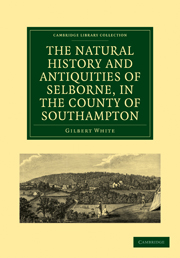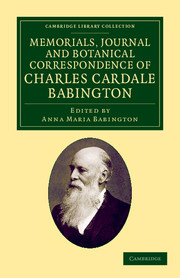Refine search
Actions for selected content:
12661 results in History of science
DIAGRAMS OF THE APPLIED FORCES AND OF THE FORCES OF REACTION OF THE PARTS SUBJECTED TO STRESS IN FRAMED STRUCTURES
- from PART II - ON DIAGRAMS OF FORCES WITH NUMEROUS EXAMPLES
-
- Book:
- Economics of Construction in Relation to Framed Structures
- Published online:
- 05 June 2016
- Print publication:
- 25 September 2014, pp 45-61
-
- Chapter
- Export citation
PART VI - IMPACT
-
- Book:
- The Mechanical Principles of Engineering and Architecture
- Published online:
- 05 June 2016
- Print publication:
- 25 September 2014, pp 586-604
-
- Chapter
- Export citation
Table III - Showing the Horizontal Thrust of an Arch, the Radius of whose Intrados is Units, and the Weight of each Cubic Foot of its Material and that of its Loading, Unity
- from APPENDIX
-
- Book:
- The Mechanical Principles of Engineering and Architecture
- Published online:
- 05 June 2016
- Print publication:
- 25 September 2014, pp 619-621
-
- Chapter
- Export citation
Colophon
-
- Book:
- Economics of Construction in Relation to Framed Structures
- Published online:
- 05 June 2016
- Print publication:
- 25 September 2014, pp v-viii
-
- Chapter
- Export citation

The Natural History and Antiquities of Selborne, in the County of Southampton
-
- Published online:
- 05 September 2014
- Print publication:
- 02 June 2011
- First published in:
- 1789

Memorials Journal and Botanical Correspondence of Charles Cardale Babington
-
- Published online:
- 05 September 2014
- Print publication:
- 21 February 2013
- First published in:
- 1897
CHAP VI - CANALS
-
- Book:
- Sketch of the Civil Engineering of North America
- Published online:
- 05 June 2015
- Print publication:
- 28 August 2014, pp 185-214
-
- Chapter
- Export citation
CHAP. VII - ROADS
-
- Book:
- Sketch of the Civil Engineering of North America
- Published online:
- 05 June 2015
- Print publication:
- 28 August 2014, pp 215-222
-
- Chapter
- Export citation
CHAP. XII - HOUSE-MOVING
-
- Book:
- Sketch of the Civil Engineering of North America
- Published online:
- 05 June 2015
- Print publication:
- 28 August 2014, pp 309-316
-
- Chapter
- Export citation
CHAP. IX - RAILWAYS
-
- Book:
- Sketch of the Civil Engineering of North America
- Published online:
- 05 June 2015
- Print publication:
- 28 August 2014, pp 237-277
-
- Chapter
- Export citation
CHAP. III - RIVER NAVIGATION
-
- Book:
- Sketch of the Civil Engineering of North America
- Published online:
- 05 June 2015
- Print publication:
- 28 August 2014, pp 75-115
-
- Chapter
- Export citation
CHAP. II - LAKE NAVIGATION
-
- Book:
- Sketch of the Civil Engineering of North America
- Published online:
- 05 June 2015
- Print publication:
- 28 August 2014, pp 48-74
-
- Chapter
- Export citation
CHAP. X - WATER-WORKS
-
- Book:
- Sketch of the Civil Engineering of North America
- Published online:
- 05 June 2015
- Print publication:
- 28 August 2014, pp 278-295
-
- Chapter
- Export citation
CONTENTS
-
- Book:
- Sketch of the Civil Engineering of North America
- Published online:
- 05 June 2015
- Print publication:
- 28 August 2014, pp xi-xv
-
- Chapter
- Export citation
Frontmatter
-
- Book:
- Sketch of the Civil Engineering of North America
- Published online:
- 05 June 2015
- Print publication:
- 28 August 2014, pp i-vi
-
- Chapter
- Export citation
PREFACE
-
-
- Book:
- Sketch of the Civil Engineering of North America
- Published online:
- 05 June 2015
- Print publication:
- 28 August 2014, pp vii-x
-
- Chapter
- Export citation
CHAP. VIII - BRIDGES
-
- Book:
- Sketch of the Civil Engineering of North America
- Published online:
- 05 June 2015
- Print publication:
- 28 August 2014, pp 223-236
-
- Chapter
- Export citation
CHAP. IV - STEAM NAVIGATION
-
- Book:
- Sketch of the Civil Engineering of North America
- Published online:
- 05 June 2015
- Print publication:
- 28 August 2014, pp 116-169
-
- Chapter
- Export citation
CHAP. I - HARBOURS
-
- Book:
- Sketch of the Civil Engineering of North America
- Published online:
- 05 June 2015
- Print publication:
- 28 August 2014, pp 17-47
-
- Chapter
- Export citation
CHAP. V - FUEL AND MATERIALS
-
- Book:
- Sketch of the Civil Engineering of North America
- Published online:
- 05 June 2015
- Print publication:
- 28 August 2014, pp 170-184
-
- Chapter
- Export citation
